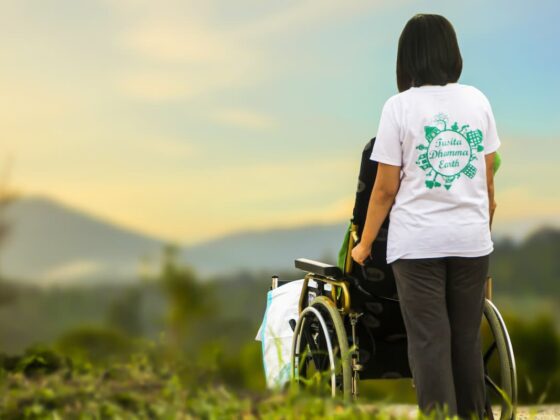What You Need to Know about Adoption
Alia Eyres (CEO of Mother’s Choice) and Alfred Ip (Partner at Hugill & Ip) answer some of the most frequently asked questions about adoption in Hong Kong. They talk about the best interest of the child, the role of the Social Welfare Department and accredited NGOs that facilitate the adoption process, as well as issues related to rights and obligations of parents.
The Q&A is part of the #ProtectYourChildren campaign. From 9 November – World Adoption Day – to 6 December 2020 Hugill & Ip Solicitors celebrates Adoption Awareness Month. We wish to spread awareness about issues related to the protection of minors and to raise funds to benefit the children without families and pregnant teenagers in Hong Kong. Every contribution to Mother’s Choice counts. Our vision is to see every child in a loving family, giving hope and changing the life stories of vulnerable girls and babies.
Q1: What is the current institutional care situation in Hong Kong?
About 4,000 children in Hong Kong live in institutional care, with many more without a safe, loving, and permanent home. The longer a child lives without a family, the more difficult it can become for their emotional and physical development.
These children live in the residential care system in Hong Kong, in institutions, foster care, and small group homes. At least 400-600 more children are on a waitlist at any one time, waiting an average of 31 months trying to get into the residential care system, while still living in unsafe environments or in hospital.
Q2: What’s the impact of the United Nations Convention on the Rights of the Child?
The Convention on the Rights of the Child is an international treaty that sets out the basic rights of children under international law. Treaties are agreements between nations, in which governments agree to certain rules or standards regulating how they will behave. Currently 196 countries are party to the Convention, making it the most widely adopted international agreement. The Convention was extended to Hong Kong in 1994.
The Convention specifically sets out the rights of children. It recognizes that children and young people play a special role in society and have particular needs and rights that must be protected. There are more than 50 specific rights within the Convention, incorporated within four core principles:
- Non-discrimination
- Consideration of the best interests of the child
- Right to life, survival, and development
- Respect for the views of the child
While the “best interest of the child” standard is required by the Convention to be a primary consideration, in most countries it is now a legal requirement to consider what is best for the child as the paramount consideration in decisions affecting their care or wellbeing. Although it is clear that decision makers must consider the best interests of the child, figuring out what that means in practice can be difficult. In fact, this often requires many factors to be balanced against each other.
Q3: What happens in situations that affect more than just one child?
Sometimes, the issues may involve more than one individual, e.g. a teenage mother and baby, conjoined twins, or other siblings. The issue of whose interests should take priority in these circumstances has been considered by the Courts. It has been held that the Court should give priority to the interests of the child who is the subject of the application. However, if that is not possible without detriment to others, then it has been suggested that the Courts should balance the children’s interests and make a decision which causes the least detriment to all the children involved.
Q4: What is the role of the Social Welfare Department (SWD) in Hong Kong?
The SWD has an Adoption Unit who are responsible for finding suitable and permanent homes for children who have no parents and also children whose parents are unable to physically and/or financially provide and care for them. The Adoption Unit has an especially difficult task when it comes to finding children with special needs suitable local adoptive home, some of them get adopted by overseas families. Further assistance is provided with adoption in private arrangements, which happen mostly in circumstances where step-parents or relatives are involved. The SWD works with the support of three accredited NGOs – including Mother’s Choice – to run the needs related to adoption in Hong Kong.
Q5: What legislation regulates adoption?
The Adoption Ordinance, Cap 290 regulates the whole legal process. Firstly, the biological parents will need to give their consent for adoption to take place, unless of course the child has been abandoned or is an orphan. Either “general consent” or “specific consent” can be provided for a child to be legally adopted. “General consent” is given when the SWD place a child for adoption with the approved adoptive parents. “Specific consent” is given by the biological parents specifying who they wish the adoptive parents to be. Although rare, it is possible for private adoptions to happen, for example when the proposed adopting individual(s) is/are relatives or stepparents of the child.
Q6: What criteria do the adoptive parents need to fulfil?
Obviously, it is necessary for checks and balances to be in place when allowing individuals to adopt. The children up for adoption are vulnerable and it is important that strict regulations are in place to ensure their protection. The adoptive parents must: be at least 25 y.o.; be in good mental and physical health conditions; have stable employment; and have no criminal records. The potential adoptive parents will also need to undergo specific assessments on their psychological state and their lifestyle. Multiple interviews and assessments will be carried out for someone to be deemed fit to adopt. These tests are not only to ensure someone can be trusted and is capable of looking after a child, they also help the SWD find the most compatible match by considering aspects such as cultural, religious and ethnic backgrounds.
Q7: How are children and parents matched?
All children who are suitable for adoption are placed into the “adoptees pool”, regardless of where they are living. The adoption agency assigned to the children and the SWD will work together to try and find the best compatible matches, from the potential parents available. This is not done of “first come first serve basis”, careful consideration is given to various aspects of the children’s personality/circumstance and the parents compatibility.
Q8: How long does the adoption process last?
Once a child and an adoptive parent are matched, the child is placed at the adoptive parent’s home for six-months to ensure that the adjustment goes smoothly. If all goes well, the Court order that approves and finalises the adoption will be given and the adoptive parents will assume all the rights and obligations of the biological parents, the child will be considered as their natural child. It is worth noting that upon this order being issued, the adoptive parents will be subject to the same parental obligations as any other birth parent, and the adopted child will enjoy the same rights as any biological child under the laws of Hong Kong.
If a child has been legally adopted outside of Hong Kong, according to the jurisdiction where adoption took place, then the adoption shall have the same effect as an adoption order validly made in accordance with the provisions of the Adoption Ordinance.
Q9: Can an individual adopt as single parent?
It is possible for a person to adopt as a single parent so long as the applicant fulfils the adoption requirements of Hong Kong. There are restrictions in place though, for instance a single male applicant cannot adopt a female infant, unless the Court is satisfied that there are special circumstances which justify an exceptional adoption order being made.
Q10: Can same-sex couples or step-parents adopt?
Same-sex marriage is not recognised in Hong Kong, meaning same sex couples cannot adopt together. One party could adopt as a single parent, but he/she would have to satisfy the same criteria set for single parent adoption.
“Step-parent adoption” means an adoption of a child by a step-parent where one birth parent retains custody and control of the child. Section 5(2) of the Adoption Ordinance states that an adoption order may be made in respect of an infant on the joint application of two spouses if, inter alia, either of the applicants is the mother or father of the infant. It follows that a birth parent who remarries has to apply to adopt his/her own child from a former marriage if his/her new spouse wishes to adopt the child, thereby “downgrading” the status of a biological parent and passing it on to an adoptive parent.
For contributions and to receive a Deed of Guardianship by Hugill & Ip’ Private Client and Family team of solicitors, you can access Mother’s Choice “Donate” link and set up gifts for self-use, a family member/friend, a young mother from Mother’s Choice network.
For information purposes only. Its contents do not constitute legal advice and readers should not regard this as a substitute for detailed advice in individual instances.





